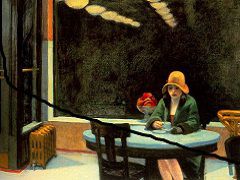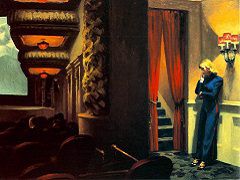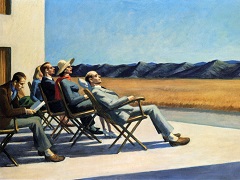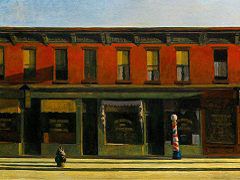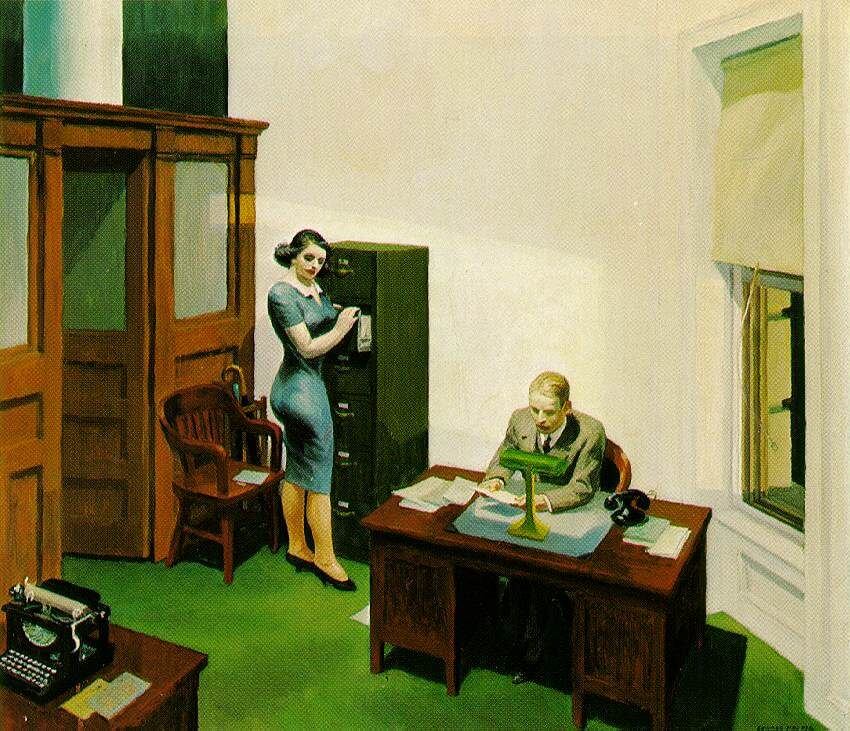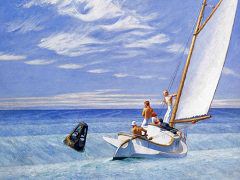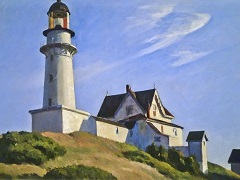The Long Leg, 1935 by Edward Hopper
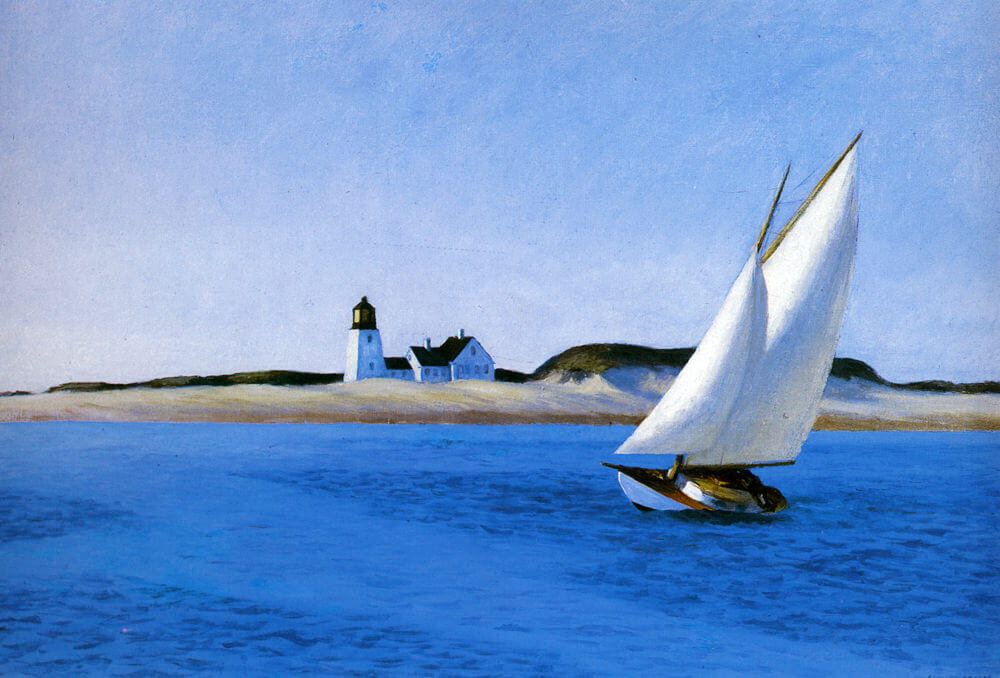
As in The Long Leg, 1935, with its simplified forms modeled by a strong light, Edward Hopper's realism was tempered by a modern sensibility. Hopper's compositions often have an air of stillness and a pervading mood of solitude. That is as true for his evocative images of sailing--a recurring theme in his work - as it is with his stark depictions of urban life. Here, the graceful movement of the boat across the water expresses Hopper's attachment to the sea and his love of sailing even as it contributes to the picture's quietude. Like many New York artists of his generation, Hopper sought relief from summer in the city by going to the New England shore. The cool tones and sense of peace in this work offer a respite from the heat and grime of New York. The locale is Long Point Light at Provincetown, not far from the artist's summer home in South Truro.
Hopper's seascapes fall into three main groups: pure landscapes of rocks, sea, and beach grass; lighthouses and farmhouses; and sailboats. Sometimes he combined these elements. Most of these paintings depict strong light and fair weather; he showed little interest in snow or rain scenes, or in seasonal color changes. He painted the majority of the pure seascapes in the period between 1916 and 1919 on Monhegan Island. Hopper's The Long Leg, 1935 is a nearly all-blue sailing picture with the simplest of elements, while his Ground Swell, 1939 is more complex and depicts a group of youngsters out for a sail, a theme reminiscent of iconic Breezing Up, 1876 of Winslow Homer.


